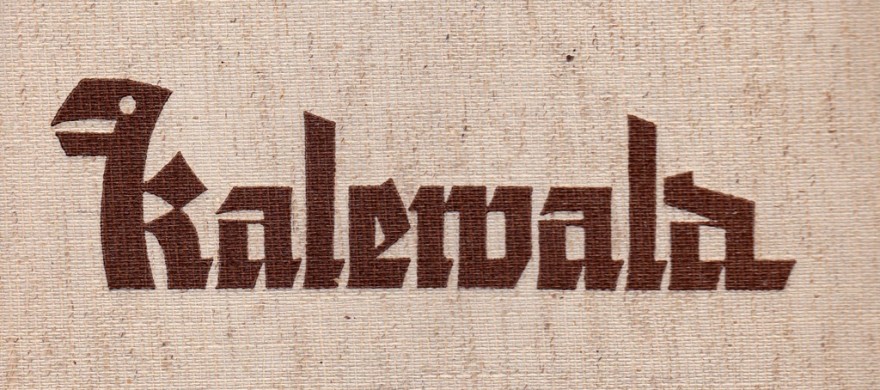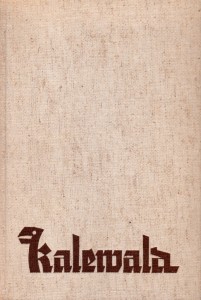Arthur Luther 1936
Arthur Luther (1876–1955) was born in Oryol in Russia and died in Baden-Baden in Germany. He studied in Moscow, Berlin, Heidelberg, Munich and Leipzig and was, after he had graduated, a professor of history of literature and German languages at the Frauenhochschule in Moscow.
He also worked as a university teacher of Germanic studies at the University of Moscow. When the first world war began, he was in Germany with his family and he did not return to Russia. In Germany he mainly worked as a librarian at the German library in Leipzig and as a teacher of contemporary Russian literature and cultural history in Marburg. (Ostdeutsche-Biographie Luther.) Among other things, Arthur Luther wrote about the history of Russian literature and he translated several Russian and French classics. He also wrote novels. His interest in the Kalevala stems from his background in literature history and his ambition to be a conveyor of western and eastern cultures. The book is a word-by-word translation and it is done based on the second or third edition by Martin Buber.
The translation by Luther, Kalewala, was reviewed by the literary critic, professor Viljo Tarkiainen (1879–1951), upon the request by the Finnish Literature Society. Tarkiainen found the book “interesting and praiseworthy, although not without mistakes”. The book contains 20 word-by-word translated poems (“Rune”) instead of the 50 original ones. The lyrical elements, the spells and “some passages that were not appropriate for children” had been left out. The latter ones contained specific descriptions of wedding rituals and the seduction of Kullervo’s sister.
From German guns in 1936 to a good friendship in 1948
A preface by Luther and the Finnish author Maila Talvio (1871–1951), who was known for her positive attitude towards Nazism, was added to the book in 1936. Luther justified the publication of the book in the following words, that emphasise the common political history:
“The great historic events in the world of the last decades have not only founded the friendship between the people of Germany and Finland but have even more so strengthened and deepened it. On the most beautiful spot in the capital of Finland, Helsinki (Helsingfors), there is a simple, yet worthy monument for German soldiers who died in 1918 when Finland fought for freedom from the Bolsheviks.
The blood was not spilled in vain. The Finnish people have not forgotten that it owes its freedom and independence to German weapons; many Germans who have visited this country in the north after the war, have experienced this. It is, by no means, not only the Finnish hospitality that has made travellers love Finland, but also the country itself. They have all praised the magic of the northern summer nights, the blue lustre of the many lakes, the lovely forests with birch and fir trees, the roaring stony streams.”
In his preface, Luther emphasised the struggle between the powers of man and nature and he saw the battles in the Kalevala as struggles of the spirits, not so much as violent confrontations. He referred to the similarities of the Finnish and German emotions and way of thinking, as well as to characteristics that could be seen both in Finnish and German poetry. Therefore, he wanted to convey the Finnish heroic tale to the German readers in the form of a simple story.
The edition was sold out and in 1948 the Kalevala by Luther was published and called Kalewala. Der finnische Mythos vom Werden der Welt und des Menschen (Kalewala. The Finnish myth about the birth of the world and man). The content of this book is identical to the book by Luther from 1936, but the prefaces by both Talvio and Luther were re-written and an epilogue by Herbert Hahn was now added to it. The motto of the epilogue was a reference to Rudolf Steiner: “The conscience of east Europe: The people of Finland.” All words and phrases that could be perceived as political and ideological were erased from the preface: When Talvio wrote in her preface in 1936 that “Germany and its people of Nibelungen have always been good friends of Finland and the Finnish people”, she did not mention the German heroic poetry at all in 1948 (“the Finnish and the Germans have always been good friends”). Luther also deleted the first sentences about political history in his preface. Thus, the Kalevala was “neutralised” after the second world war.
Voßschmidt, Liisa: “Saksan kautta eurooppalaiselle kulttuuriareenalle” – Kalevala maailmalla. Helsinki: SKS. 2012.

